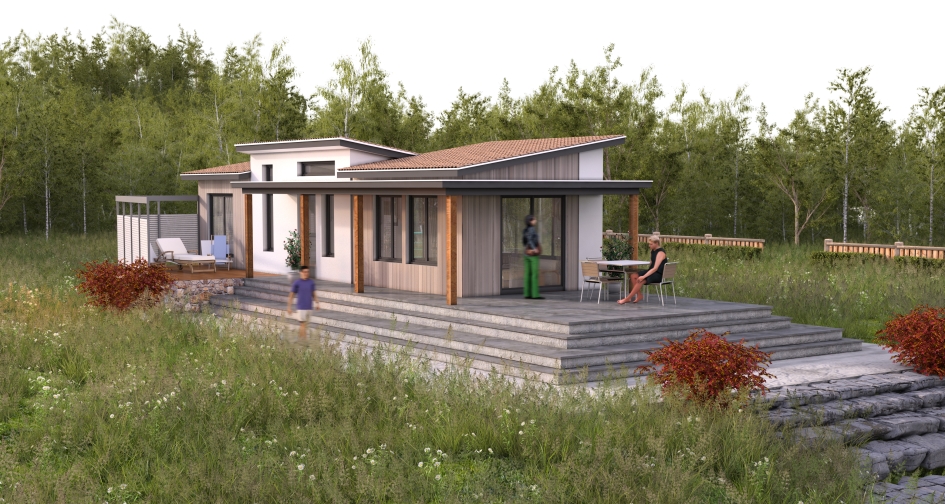Are young Canadians facing a looming housing crisis?
Despite being a huge and wealthy country – the statistics are in on housing affordability in Canada. As it turns out, people over 40 are (generally) doing fairly well. But for the rest of us there’s a lot to worry about, as expressed in this statement from GenSqueeze:
“We all know housing prices have gone way up. It’s great news for some. Since many of our parents and grandparents bought homes decades ago, far higher housing prices mean far more wealth for them. 
But what’s been good for our retiring parents is generally bad for us. High home prices squeeze generations in their 40s and under with crushing debt, which they must pay with wages that have fallen compared to a generation ago, and in jobs that rarely contribute pensions.The national response? Governments spend less than $12k on benefits and services per Canadian under 45, compared to more than $33k for every retiree.
This is NOT a “good deal” if you are in your 40s or younger. Despite Canada’s economy producing more wealth than ever before, investments made in our generation look a little scant, or unbalanced. And that’s before talking about the larger government and environmental debts we inherit.
Still, our generation is doing all it can to adapt. To compete for better employment, we squeeze in YEARS more of education and tuition. To buy a place, we accept jobs or contracts that require us to work YEARS more to save a down payment. And for many, this means we wait YEARS longer to move out of our parents’ homes, or to establish our financial independence.
Work and Postponement are our coping mechanisms”

image from GenSqueeze
At Tiny House Listings Canada, we believe that the key to affordable housing lies in a number of strategies, including diversifying the housing landscape so that more people can own a home. This includes more city’s committing to building affordable housing, setting limits and taxes on foreign buyer home ownership, and including more incentives for people to purchase small homes, tiny homes, modular homes, park model homes, shipping container homes and more. These housing solutions should be affordable so that young people can purchase homes, not just rent for the remainder of their lives.
“Nearly a fifth of Canadian renters spend more than half their total income on their rent, according to an analysis from Harvard University that suggests governments may want to get back into the business of building affordable housing.
Canada joined the U.S., Spain and U.K. among the countries where the largest shares of the population spend more than half their income on shelter alone.”
Exploring Alternatives
So aside from critical policy changes at the government level, what are the options for young Canadians? Do we have to stay on as renters while we wait for things to change? And what if they don’t change for a long time? Are we supposed to keep paying other people’s mortgage while gaining nothing is assets? Let’s look at some alternatives.
Modular Homes – A modular home is one that is built indoors, most often in a factory such as this one. Built in a controlled environment, the finished homes are transported to their new locations, where they are assembled by a builder. A modular home is not a mobile home; it is simply a home that is built off-site, as opposed to on-site.
Built to exceed CSA A277 Standard, GreenTerra homes offers models with a wide variety of floor plans, able to be configured to grow in modular format as needed. Built with steel studs, mono slope or traditional peaked roofs, with optional live roof and optional solar panels. Units can be stacked and combined for a never ending combination of structure.
Prices range from $48k and up.
Park Model Homes are considered recreational vehicles, are transportable and primarily designed for long-term or permanent placement at a destination where an RV or mobile home is allowed. When set up, park models are connected to the utilities necessary to operate home style fixtures and appliances. They provide all the comforts of a traditional home.
Prices range from $70k and up.
Mobile Homes – Manufactured (previously called mobile homes) are built on a steel frame and are typically set on concrete blocking or cement or metal pylons. Modular homes are built to Canadian Standards Association A-277 (Canadian National Building Code). Typical models range in width from 10 to 16 feet and lengths from 40 to 76 feet long. Prices range from $36 k and up. Prices range from $36 k and up.
Tiny Homes – The typical tiny house (on wheels) is usually less than 8 ft by 20 ft, with livable space totalling 120 square feet or less, for ease of towing/ mobility. We list hundreds of them on our website with a large price range anywhere from $15 and up.
Steel Frame Home Kits – Available as complete DIY steel frame panalized, sheathed kits. Includes roof trusses and or rafters as applicable. Floor joist systems available. Ready for shipment to your site for rapid installation onto your pre-built foundation (post & beam, Slab, block/concrete foundation wall). Offered in a wide variety of floor plans, or custom fabrication. Prices for these kits start at $9000.
Modular SHELL Homes – Designed and constructed in factory as a complete SHELL. These are constructed in modules that can be placed on a foundation and then shipped with OSB and house wrap, complete with all interior and exterior walls framed and sheathed with OSB and Tyvek. Door and window headers framed, ready for OSB cut out to install your own windows and doors. Prices start at $18k
Shipping Container Homes – Originally used for storage, shipping containers are made of durable steel and are built to withstand heavy stacking, a variety of weather conditions and ocean travel. They can last up to 30 years though the average working lifespan is about 10 years or less. For this reason, it is thought that there are over 30 million unused shipping containers available worldwide with prices as low as $2000 to purchase one.

Ideally, all Canadians can have the freedom to purchase and live in a comfortable home that is reasonably priced and reflects their needs. Communities should be diverse, affordable and safe places to live and raise a family, own a business and more. If we as citizens don’t push our government to do more, we risk losing out on these opportunities.
We encourage you to advocate on behalf of affordable housing, and to make wise decisions as you navigate the terrain of home ownership. With alternatives such as the ones we have listed here, you do have choices.


